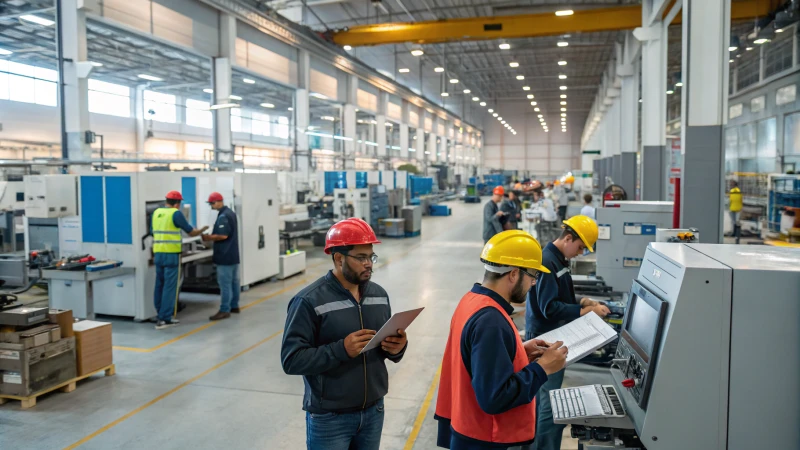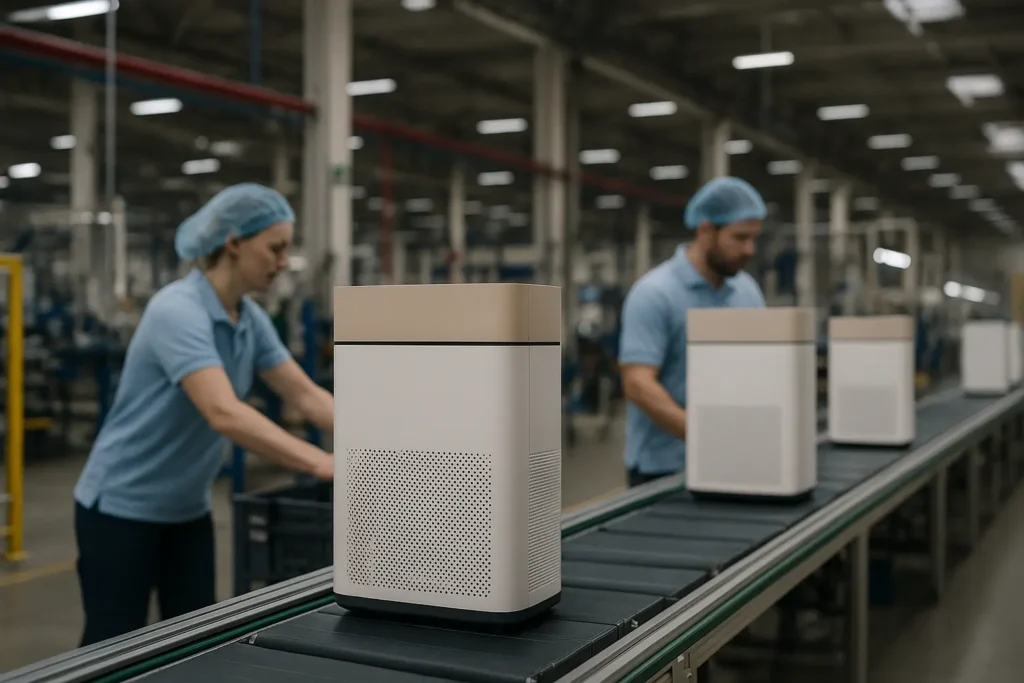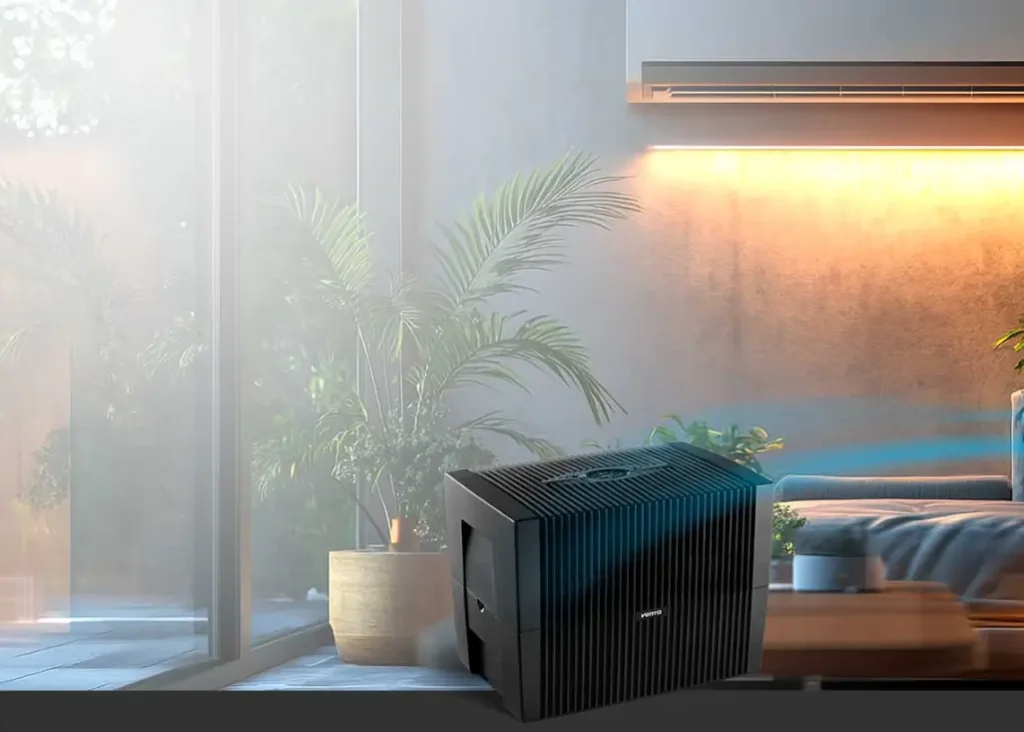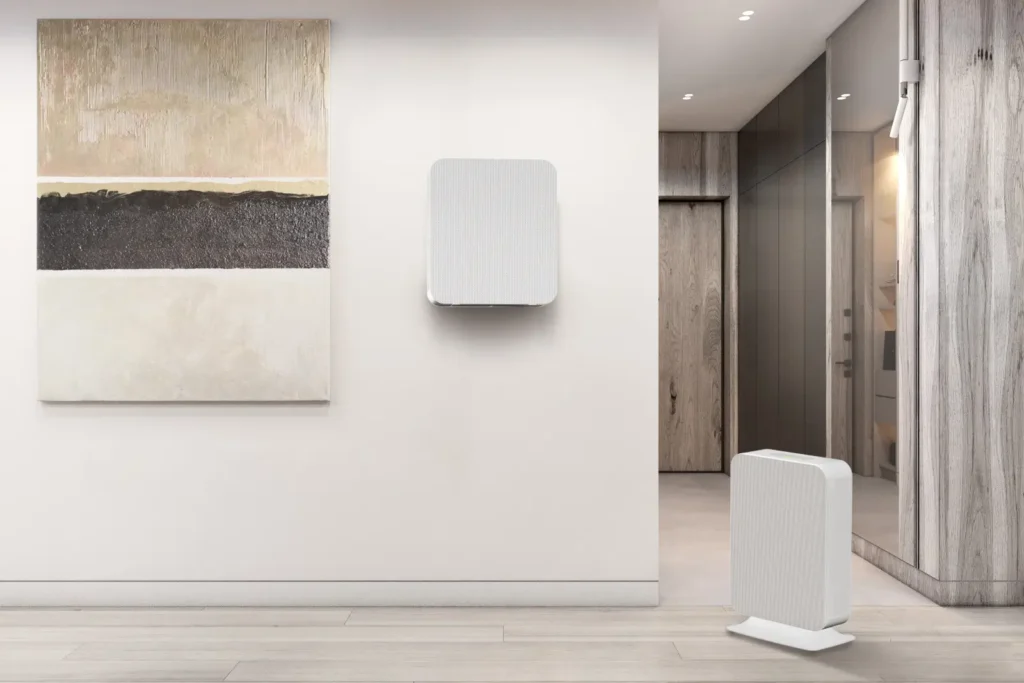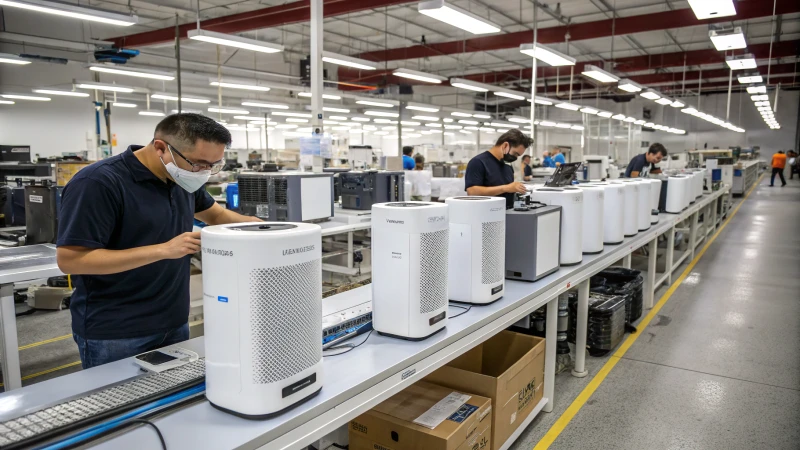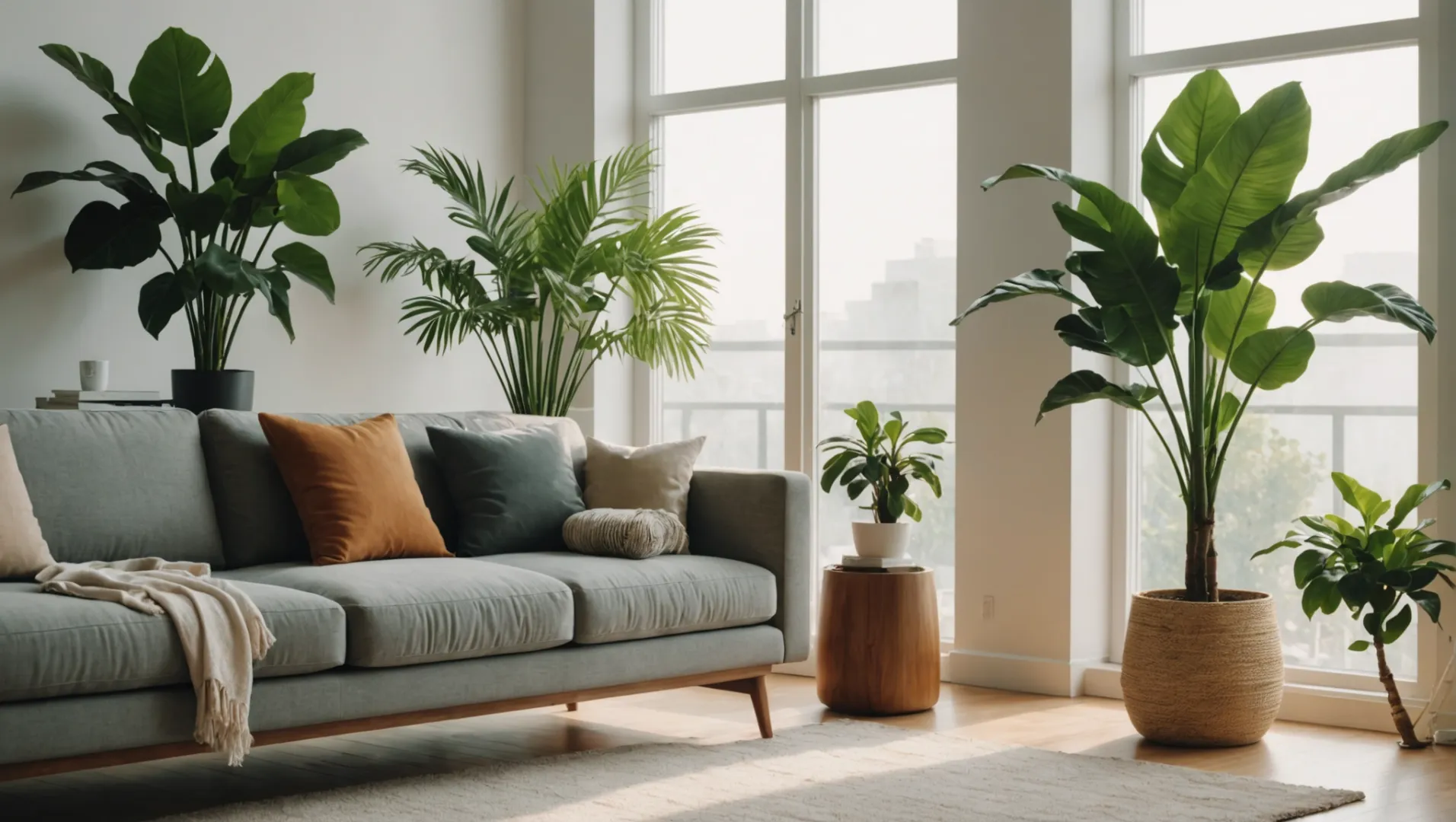
Ziehen Sie einen Luftreiniger in Betracht, um den Staub in Ihrem Haus zu bekämpfen? Kommen Sie mit mir, um das Geheimnis dieser Geräte zu lüften und herauszufinden, ob sie wirklich halten, was sie versprechen: saubere Luft!
Luftreiniger, insbesondere True HEPA Modelle sind hochwirksam bei der Staubreduzierung, da sie 99,97% der Partikel mit einer Größe von 0,3 Mikrometern auffangen. Das macht sie zu einer hervorragenden Wahl für die Verbesserung der Luftqualität in Innenräumen.
Die Wirksamkeit von Luftreinigern ist vielversprechend, aber es ist wichtig, die Nuancen der verschiedenen Modelle und Technologien zu verstehen. In diesem Blogbeitrag gehen wir darauf ein, wie diese Geräte funktionieren, welche Vorteile sie bieten und was Sie vor dem Kauf beachten sollten.
Echte HEPA-Filter fangen 99,97% der 0,3 Mikrometer großen Partikel ab.Wahr
Echte HEPA-Filter sind so konzipiert, dass sie Partikel bis zu einer Größe von 0,3 Mikrometern mit hoher Effizienz abfangen.
Was macht die Wahrheit aus? HEPA Sind die Filter so wirksam?
Wahr HEPA Filter sind dafür bekannt, dass sie bemerkenswerte 99,97% der Luftpartikel bis zu einer Größe von 0,3 Mikrometern auffangen können. Aber was genau trägt zu dieser Effizienz bei?
Wahr HEPA Filter sind aufgrund ihrer dichten Faserkonstruktion und ihrer Fähigkeit, winzige Partikel wie Staub, Pollen und Rauch abzufangen, sehr effektiv. Von unabhängigen Labors getestet, gewährleisten sie eine Filtrationseffizienz von 99,97% für Partikel mit einer Größe von 0,3 Mikrometern oder mehr und schützen so die Gesundheit durch eine deutliche Verbesserung der Luftqualität.
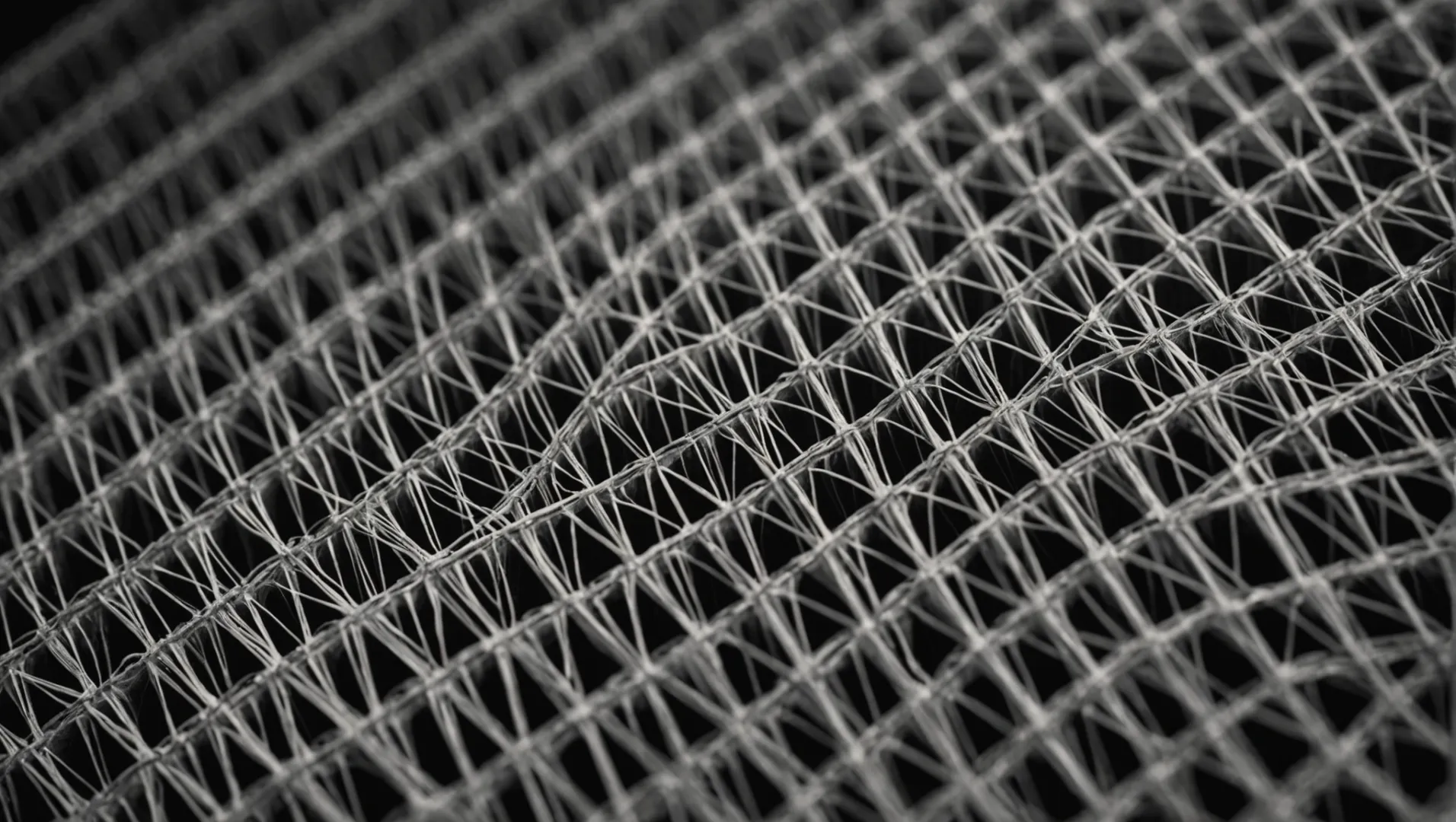
Den Mechanismus hinter der Wahrheit verstehen HEPA Filter
Der Schlüssel zur Effizienz der Wahr HEPA filtert1 liegt in ihrem komplizierten Design. Diese Filter bestehen aus dicht gepackten Faserschichten, die eine Matte bilden, welche die Partikel durch Diffusion, Abfangen und Aufstauen zurückhält.
- Diffusion: Winzige Partikel stoßen mit Gasmolekülen zusammen und bleiben aufgrund ihrer unberechenbaren Bewegungen in den Fasern hängen.
- Abfangen: Der Luftstrom trägt die Partikel nahe genug an die Faser heran, so dass sie an ihr haften bleiben.
- Impaktion: Größere Partikel, die sich auf einem geraden Weg bewegen, kollidieren direkt mit den Fasern und bleiben dort hängen.
Dieser vielseitige Ansatz ermöglicht True HEPA Filter zum Auffangen kleinster Partikel wie Staub, Pollen, Schimmelsporen und sogar Rauch.
Anwendungen und Vorteile in der realen Welt
In Umgebungen, die anfällig sind für Waldbrände2wie zum Beispiel Teile der USA, Wahr HEPA spielen Filter eine entscheidende Rolle. Sie können Rauchpartikel, die in der Regel kleiner als 1 Mikrometer sind, wirksam aus der Luft entfernen. Durch das Schließen der Fenster und die Verwendung eines leistungsstarken True HEPA Wenn Sie den Luftreiniger mindestens eine Stunde lang in den Turbomodus schalten, können Sie einen erheblichen Luftaustausch erreichen und so die Luftqualität in Innenräumen verbessern.
| Eigenschaften | Wahr HEPA Wirksamkeit der Filter |
|---|---|
| Entfernung der Partikelgröße | Erfasst 0,3 Mikrometer und größer |
| Wirkungsgrad der Filtration | 99.97% |
| Häufige Verwendungszwecke | Allergien, Rauch, Staubreduzierung |
| Gesundheitliche Vorteile | Verringert das Risiko von Atemwegsproblemen |
Vergleich mit anderen Technologien
Es gibt zwar Technologien wie UV-Licht und Ionisatoren, aber sie erreichen nicht die Wirksamkeit von True HEPA Filter beim Einfangen von Partikeln. UV-Licht tötet vor allem Bakterien und Viren ab, während Ionisatoren die Partikel elektrisch aufladen. Diese Technologien fangen jedoch möglicherweise nicht alle in der Luft befindlichen Verunreinigungen effizient ab.
Für Menschen, die unter Stauballergien leiden oder in Gebieten mit schlechter Luftqualität leben, ist ein True HEPA Luftreiniger wird oft wegen seiner überlegenen Eigenschaften gegenüber anderen Optionen empfohlen. Staubentfernung3 Fähigkeiten.
Echte HEPA-Filter fangen 99,97% der Partikel mit einer Größe von 0,3 Mikrometern ab.Wahr
Echte HEPA-Filter werden getestet, um sicherzustellen, dass sie 99,97% der Partikel abfangen.
UV-Licht ist bei der Staubentfernung effektiver als HEPA-Filter.Falsch
HEPA-Filter fangen Staubpartikel effektiver auf als UV-Licht.
Können Luftreiniger bei Allergien und Atembeschwerden helfen?
Haben Sie zu Hause mit Allergien oder Atemwegsproblemen zu kämpfen? Entdecken Sie, ob Luftreiniger Ihre Lösung sein könnten, um leichter zu atmen.
Luftreiniger, insbesondere solche mit True HEPA Filter lindern Allergien und Atemwegsprobleme erheblich, da sie Allergene und Schadstoffe bis zu einer Größe von 0,3 Mikrometern zurückhalten.
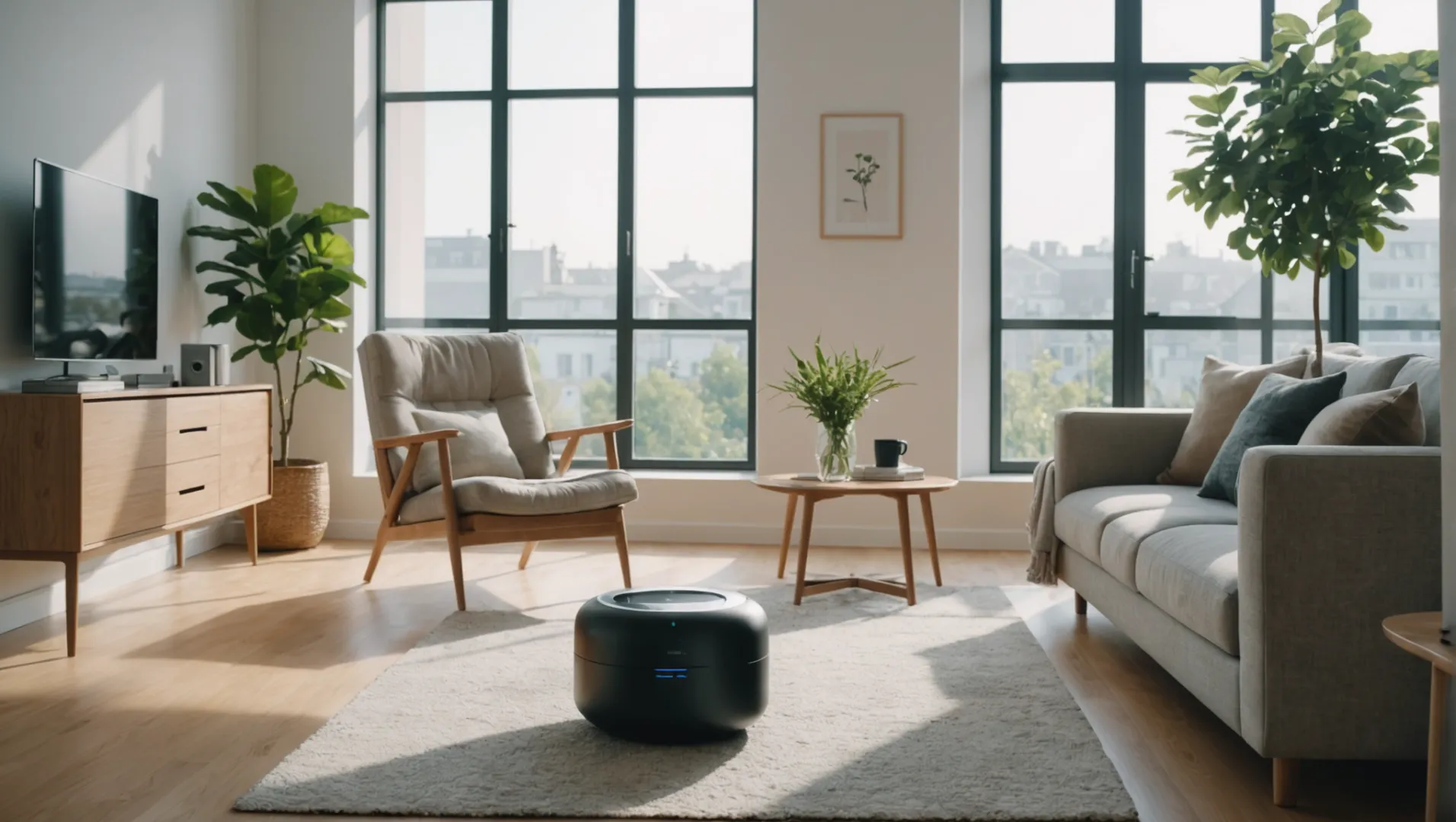
Verständnis für luftgetragene Allergene und ihre Auswirkungen
Allergene wie Hausstaubmilben, Pollen, Tierhaare und Schimmelpilzsporen sind häufige Schadstoffe in der Innenraumluft, die Allergien und Atemwegsprobleme auslösen. Diese Partikel können Symptome wie Niesen, Verstopfung, Husten und sogar Asthmaanfälle hervorrufen. Luftreiniger mit Wahr HEPA filtert4 sind so konzipiert, dass sie diese winzigen Reizstoffe auffangen und ihre Präsenz in Ihrem Wohnraum reduzieren.
Wie wahr HEPA Filter Arbeit
Wahr HEPA Filter sind hocheffizient beim Auffangen von Partikeln in der Luft. Sie können bis zu 99,97% der Partikel mit einer Größe von nur 0,3 Mikrometern zurückhalten und sind damit besonders effektiv für Allergiker. Bei richtiger Anwendung können sie die Konzentration von Allergenen in der Luft erheblich verringern und so die Allergiesymptome minimieren.
Vorteile von Luftreinigern für die Gesundheit der Atemwege
Für Personen, die an Atemwegserkrankungen wie Asthma oder chronisch obstruktiver Lungenerkrankung (COPD), ist die Aufrechterhaltung sauberer Luft entscheidend. Durch die Beseitigung schädlicher Schadstoffe können Luftreiniger eine Verschlimmerung dieser Zustände verhindern. Bei Ereignissen wie Waldbrandperioden5In Zeiten, in denen Rauch und andere Schadstoffe drastisch zunehmen, kann ein Luftreiniger ein wichtiges Instrument zum Schutz der Atemwege sein.
Zusätzliche Technologien bei Luftreinigern
Zwar wahr HEPA ist der Goldstandard, aber einige Luftreiniger verfügen über zusätzliche Technologien wie Aktivkohlefilter, UV-Licht oder Ionisatoren, um die Luftqualität weiter zu verbessern. Diese Funktionen können helfen, Gerüche zu neutralisieren oder Bakterien und Viren abzutöten, und bieten so eine umfassendere Lösung für Menschen mit schweren Allergien oder Atemwegsproblemen.
Tipps für eine optimale Nutzung
Um den Nutzen eines Luftreinigers zu maximieren, sollten Sie die folgenden Tipps beachten:
- Platzierung: Stellen Sie den Luftreiniger in den Räumen auf, in denen Sie sich am meisten aufhalten, z. B. im Schlafzimmer oder im Wohnzimmer.
- Regelmäßige Wartung: Reinigen oder ersetzen Sie die Filter gemäß den Anweisungen des Herstellers, um die Effizienz zu gewährleisten.
- Größe des Zimmers: Wählen Sie ein Modell, das der Größe Ihres Zimmers entspricht, um eine optimale Leistung zu erzielen.
Wenn Sie wissen, wie die verschiedenen Arten von Luftreinigern funktionieren und welche spezifischen Vorteile sie bieten, können Sie eine fundierte Entscheidung treffen, die Ihren Bedürfnissen am besten entspricht und die Qualität Ihrer Innenraumluft verbessert.
Echte HEPA-Filter fangen 99,97% der Partikel ab.Wahr
Echte HEPA-Filter sind so konzipiert, dass sie Partikel bis zu einer Größe von 0,3 Mikrometern zurückhalten.
Luftreiniger beseitigen alle Innenraumallergene.Falsch
Luftreiniger sind zwar wirksam, können aber nicht 100% aller Allergene entfernen.
Wie funktionieren Luftreiniger während der Waldbrandzeit?
Waldbrände setzen eine gefährliche Mischung aus Rauch und Feinstaub frei. Können Luftreiniger in solchen Zeiten Linderung verschaffen?
Luftreiniger mit True HEPA Filter sind in der Zeit der Waldbrände wirksam, fangen Rauchpartikel auf und verbessern die Luftqualität in Innenräumen erheblich. Wenn sie in den betroffenen Gebieten ständig in Betrieb sind, tragen sie dazu bei, die Belastung durch schädliche Schadstoffe zu verringern.
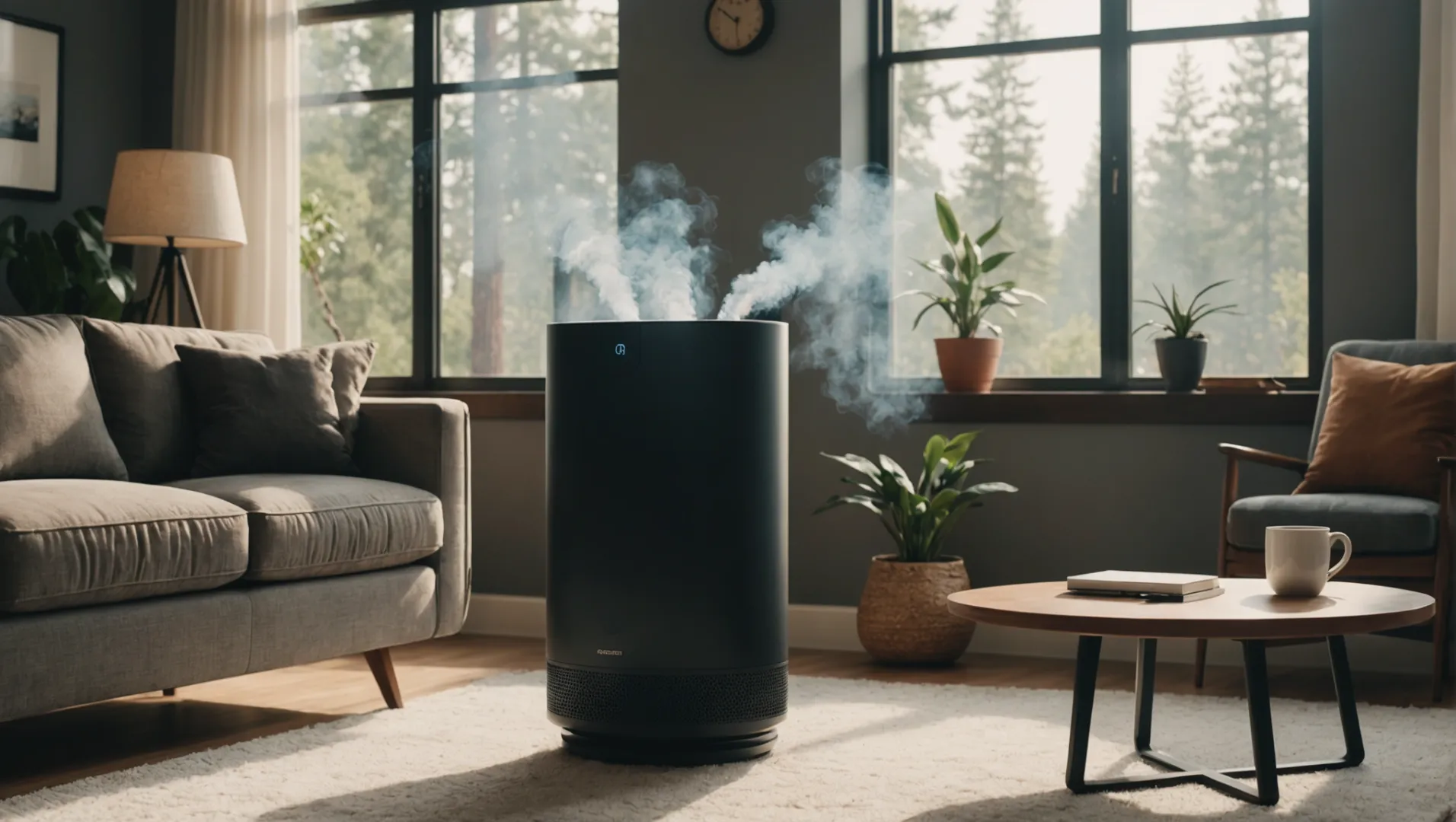
Die Auswirkungen des Rauchs von Waldbränden verstehen
Waldbrände erzeugen einen Cocktail von Schadstoffen, darunter Feinstaub (PM2,5), Kohlenmonoxid und flüchtige organische Verbindungen (VOC). Diese Schadstoffe können tief in die Lunge eindringen und Atemwegserkrankungen verschlimmern. Bei solchen Ereignissen verschlechtert sich die Luftqualität im Freien und wirkt sich auch auf Innenräume aus.
Die Rolle von True HEPA Filter
Wahr HEPA Filter mit einer zertifizierten Abscheideleistung von 99,97% für Partikel bis zu einer Größe von 0,3 Mikrometern sind ideal für den Umgang mit Brandrauch. Sie fangen die winzigen Partikel, aus denen der Rauch besteht, wirksam ab und verbessern so die Luftqualität in Innenräumen erheblich. Zusätzlich zum Rauch entfernen diese Filter auch Staub und Allergene.
Optimierte Nutzung von Luftreinigern bei Waldbränden
- Platzierung: Stellen Sie den Luftreiniger in den Räumen auf, in denen Sie sich die meiste Zeit aufhalten.
- Modus: Verwenden Sie den Turbo- oder Hochleistungsmodus für eine schnelle Luftreinigung.
- Dauer: Lassen Sie den Luftreiniger kontinuierlich laufen, insbesondere wenn die Luftqualitätsindizes erhöhte Schadstoffwerte anzeigen.
- Versiegeln: Halten Sie Fenster und Türen geschlossen, um zu verhindern, dass Rauch von draußen in Ihre Wohnung eindringt.
| Modus | Luftaustauschrate | Empfohlener Verwendungszweck |
|---|---|---|
| Turbo | 5-6 Mal/Stunde | Während der Spitzenbelastungszeiten |
| Normal | 3-4 Mal/Stunde | Regelmäßige Anwendung zur Erhaltung der Luftqualität |
Beschränkungen und zusätzliche Überlegungen
Zwar wahr HEPA Filter sehr effektiv sind, ist es wichtig zu wissen, dass sie Gase wie Kohlenmonoxid nicht entfernen. Für einen umfassenden Schutz sollten Sie Modelle mit Aktivkohlefiltern wählen, die Gerüche und gasförmige Schadstoffe absorbieren. Außerdem ist eine regelmäßige Wartung der Filter entscheidend für eine optimale Leistung.
Wirksamkeit von True HEPA in Rauchfiltration6: Erfahren Sie mehr darüber, warum diese Filter in der Zeit der Waldbrände bevorzugt werden.
Alternative Technologien zur Luftreinigung7: Erforschen Sie andere Technologien wie UV-Licht und Ionisatoren und deren Wirksamkeit gegen Rauch und Staub.
Auf dem Laufenden bleiben über lokale Luftqualitätsindizes8 kann Ihnen bei der Entscheidung helfen, wann Sie Ihren Luftreiniger aktivieren und die Einstellungen für einen maximalen Nutzen anpassen sollten.
Echte HEPA-Filter entfernen 99,97% der Rauchpartikel.Wahr
Echte HEPA-Filter fangen Partikel bis zu einer Größe von 0,3 Mikrometern ab, einschließlich Rauch.
Luftreiniger können Kohlenmonoxid aus dem Rauch von Waldbränden beseitigen.Falsch
HEPA-Filter entfernen keine Gase; es werden Aktivkohlefilter benötigt.
Gibt es Alternativen zu HEPA Luftreiniger zur Staubbekämpfung?
HEPA Luftreiniger sind für die Staubkontrolle bekannt, aber gibt es noch andere brauchbare Optionen?
Alternativen zu HEPA Zu den Luftreinigern gehören elektrostatische Luftreiniger, Aktivkohlefilter und Ionisatoren. Diese können zwar bei der Staubreduzierung helfen, sind aber im Vergleich zu echten Luftreinigern unterschiedlich wirksam. HEPA Modelle.

Erkundung elektrostatischer Luftreiniger
Elektrostatische Luftreiniger verwenden elektrisch geladene Platten, um Staubpartikel aufzufangen. Diese Geräte können für größere Partikel wirksam sein, aber sie fangen kleinere Partikel möglicherweise nicht so effizient ab wie True HEPA Filter. Die Wartung dieser Systeme erfordert eine häufige Reinigung der Platten, um eine optimale Leistung zu gewährleisten.
Aktivkohle-Filter
Aktivkohlefilter sind in erster Linie dafür bekannt, dass sie Gerüche und Gase und weniger feste Staubpartikel entfernen. Sie werden jedoch häufig in Verbindung mit anderen Filtersystemen eingesetzt, um die Luftqualität insgesamt zu verbessern. Sie können eine ergänzende Wahl neben anderen Methoden sein, reichen aber möglicherweise nicht aus, um Staub in nennenswertem Umfang allein zu entfernen.
Ionisatoren: Pro und Kontra
Ionisatoren setzen geladene Ionen in die Luft frei, die sich an Staubpartikel anlagern und diese so schwer machen, dass sie zu Boden fallen. Diese Methode kann zwar den Staub in der Luft reduzieren, entfernt die Partikel aber nicht vollständig aus der Umwelt. Einige Ionisatoren können auch Ozon erzeugen, das die Luftqualität in Innenräumen beeinträchtigen kann.
Alternativen im Vergleich
| Methode | Wirksamkeit auf Staub | Zusätzliche Vorteile |
|---|---|---|
| HEPA Luftreiniger | Hoch | Wirksam gegen kleine Partikel |
| Elektrostatische Luftreiniger | Mäßig | Kann bei regelmäßiger Reinigung kostengünstig sein |
| Aktivkohle-Filter | Niedrig | Hervorragend zur Geruchsbeseitigung geeignet |
| Ionisatoren | Variabel | Kann zur Staubreduzierung beitragen, kann aber Ozon erzeugen |
Bei der Erwägung von Alternativen zu Wahr HEPA Luftreiniger9Um die Luftqualität zu verbessern, ist es wichtig, Ihre spezifischen Bedürfnisse zu ermitteln, z. B. die Größe des Raums und zusätzliche Probleme wie Gerüche oder chemische Dämpfe. Die Kombination mehrerer Methoden kann eine umfassende Lösung zur Verbesserung der Luftqualität in Innenräumen bieten.
Elektrostatische Luftreiniger erfassen kleinere Partikel als HEPA.Falsch
Elektrostatische Reiniger sind bei kleineren Partikeln weniger wirksam als HEPA-Reiniger.
Ionisatoren können Ozon erzeugen, das die Luftqualität in Innenräumen beeinträchtigt.Wahr
Einige Ionisatoren setzen Ozon frei, das die Luftqualität beeinträchtigen kann.
Schlussfolgerung
Auf meiner Reise zu sauberer Luft habe ich entdeckt, dass True HEPA Filter sind eine leistungsstarke Lösung zur Staubreduzierung und Verbesserung der Raumluftqualität. Wählen Sie mit Bedacht und je nach Ihrer Umgebung und Ihren spezifischen Bedürfnissen.
-
Erfahren Sie mehr darüber, wie echte HEPA-Filter funktionieren: Ein HEPA-Filter (High Efficiency Particle Air) kann 99,97% - 99,99% der in der Luft befindlichen Partikel entfernen, die gleich groß, kleiner oder größer als 0,3 Mikrometer sind. ↩
-
Erfahren Sie, wie HEPA-Filter effektiv mit Rauchpartikeln umgehen: Und tatsächlich - HEPA-Luftfilter sind außergewöhnlich gut darin, Partikel dieser Größe aus der Luft zu entfernen. ↩
-
Finden Sie die am besten bewerteten Luftreiniger, die speziell für die Staubkontrolle entwickelt wurden..: Wir haben in den letzten neun Jahren mehr als 60 Luftreiniger getestet, und der außergewöhnliche Coway Airmega AP-1512HH Mighty ist unser Spitzenreiter unter ihnen. ↩
-
Erfahren Sie mehr über die Effizienz und Funktion von echten HEPA-Filtern: Ein HEPA-Filter (High Efficiency Particle Air) kann 99,97% - 99,99% der in der Luft befindlichen Partikel entfernen, die gleich groß, kleiner oder größer als 0,3 Mikrometer sind. ↩
-
Erfahren Sie, wie Luftreiniger bei erhöhter Rauch- und Schadstoffbelastung funktionieren..: Raumluftreiniger können dazu beitragen, die Luft in Ihrer Wohnung während eines Waldbrandes von Feinstaub zu befreien. ↩
-
Verstehen Sie, warum True-HEPA-Filter bei der Erfassung von Rauchpartikeln hervorragend sind: Und echte HEPA-Luftfilter sind außergewöhnlich gut darin, Partikel dieser Größe aus der Luft zu entfernen. Unsere Spitzenreiter, der Coway AP-1512HH und fast ... ↩
-
Erfahren Sie mehr über andere Luftreinigungstechnologien und ihre Wirksamkeit..: Beispiele für proaktive Reinigung sind Ionengeneratoren, photokatalytische Oxidation und die von ActivePure entwickelte Technologie. ↩
-
Zugriff auf Echtzeitdaten zur Überwachung der lokalen Luftqualitätsbedingungen..: Die AirNow-Feuer- und Rauchkarte enthält Crowdsourcing-Daten von Tausenden von Luftqualitätssensoren, zusätzlich zu den Daten von Tausenden von permanenten PM2,5-Monitoren ... ↩
-
Erfahren Sie mehr über die Effizienz und die Möglichkeiten von echten HEPA-Filtern: Echte HEPA-Filter halten länger und können 24 Stunden am Tag und 365 Tage im Jahr eingesetzt werden. Sie können Staub, Tierhaare, Pollen, Schimmel, Bakterien, ... ↩


